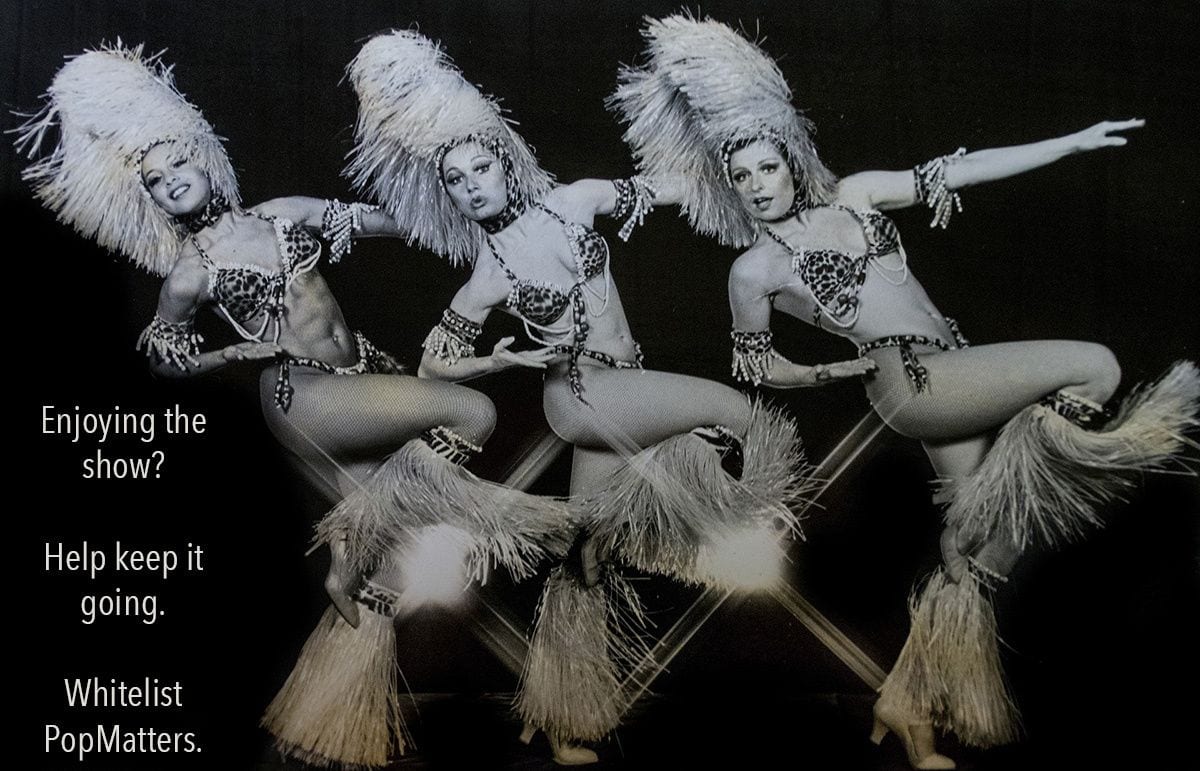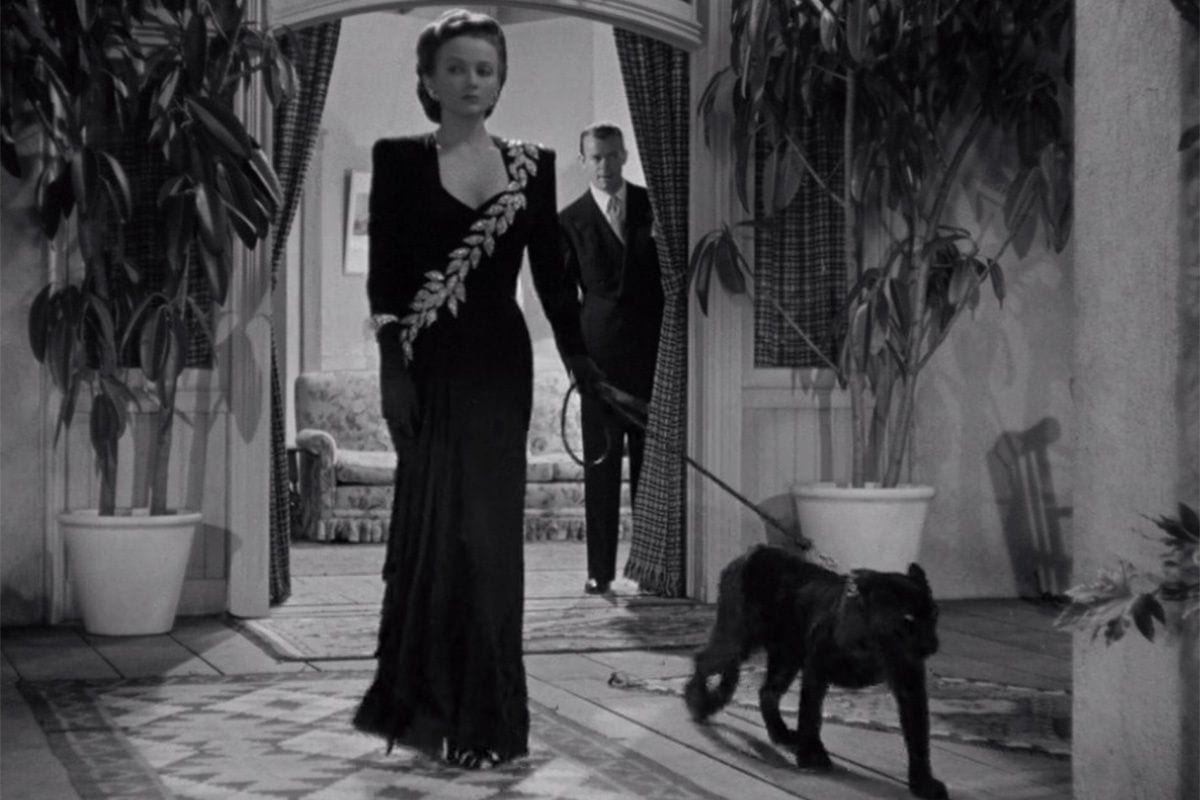
“The oldest and strongest emotion of mankind is fear, and the oldest and strongest kind of fear is fear of the unknown.”— H. P. Lovecraft
In The Bad and the Beautiful (Minnelli, 1952), Kirk Douglas plays a movie producer who is trying to make a studio-assigned project with the schlocky title “Doom of the Cat Men” into something better than it sounds. His budget is extremely low and the Cat Men costumes are awful. So he comes up with a clever solution: Never show the Cat Men.
The scene is a direct reference to producer Val Lewton and his B-movie unit at RKO Studios during the 1940s. Lewton was a Russian-born journalist, novelist, and poet who made his name working as an assistant to David O. Selznick. By the 1940s Lewton was ready to produce his own films and RKO offered him a unique opportunity. The studio was eager to make a series of films that would compete with Universal Studio’s long line of successful monster flicks but at a tenth of the budget.
Lewton would be given a pretty free hand as long as he agreed to three rules: budgets less than $150k, running times of 75-minutes or less, and studio assigned titles he could not change. Titles such as Cat People (Tourneur, 1943), I Walked with a Zombie (Tourneur, 1943), and The Leopard Man (Tourneur, 1943). Lewton agreed and ended up making some of the best, most literate and influential horror films of all time.
Dancers by hsvbooth (Pixabay License / Pixabay)
Not showing the Cat Men was the secret. The legend goes that Lewton brought writer Dewitt Bodeen and director Jacques Tourneur into his office, shut off the lights, and began telling them a story in the dark. It was within the darkness that the imagination could be set free, and given a title like Cat People, it would need as much imagination as possible.
Cat People is really just a werewolf tale, much like Universal’s The Wolf Man (Waggner, 1941) and RKO probably expected a film in that vein. But Lewton wasn’t interested in doing the feline version of the Wolf Man. The Lewton films would be defined by what they were not. They would not go for crude shocks or elaborate on-camera transformations. Everything would be suggested. While Universal often used loud thundering music scores, Lewton would embrace silence. While Universal told very clear and unambiguous stories, Lewton would opt for a more psychological approach.
Were the events witnessed real or imagined? In The Wolf Man there is never any doubt that Larry Talbot (Lon Chaney Jr.) was turning into a hairy monster when the moon was full. In Cat People it’s never entirely certain whether or not Irena (Simone Simon) is transforming into the panther.
Universal’s films were mostly set in anonymous European settings amid castles and graveyards. Lewton would set his films in modern, urban environments featuring characters who worked ordinary jobs. The final element would be the development of something called the “Lewton Bus”. In Cat People, Jane Randolph is walking home at night and being stalked by what may be a giant panther. As the tension rises to a boiling point, the audience is jolted by the sound of a loud hiss — not of a panther, but rather the doors to a city bus. Thus, what we know today as the “jump scare” was born.
The first two Lewton productions, both brilliantly directed by Tourneur, Cat People and I Walked with a Zombie are considered classics today. But their third collaboration, The Leopard Man, has always been considered something of a misstep. Critic Leonard Maltin called the film “an intriguing but flawed Val Lewton thriller”. Part of this may be because Lewton and Tourneur are on record saying that they felt the film was an artistic failure. But filmmakers of this era often said such things when a film failed to find an audience.
It seems more likely that the real reason the film has a lesser reputation was that it was way ahead of its time. I don’t think the film was originally intended as a radical experiment in narrative storytelling, but the practicalities of adapting Cornell Woolrich’s 1942 novel Black Alibi probably forced Lewton to break the rules. The third novel in Woolrich’s “black” series, Alibi, is set in a South American town terrorized by an escaped jaguar — or so it seems. A series of grisly murders may be the work of a human beast using the jaguar as a “Black Alibi” for his crimes.
It sounds straightforward enough, but Woolrich structures the novel as a series of short stories, or vignettes featuring various characters in town as they are stalked and killed. There isn’t a traditional through line or a singular protagonist. Of course, this creates a challenge for anyone tasked with writing a linear screenplay for a commercial thriller. Lewton, along with screenwriters Ardel Wray and Edward Dein, do something very unusual; they stick close to the novel. Their script for The Leopard Man is constructed as a covert anthology movie using two of the novel’s many characters, publicist Jerry Manning (Dennis O’Keefe) and his performing girlfriend Kiki (Jean Brooks), as a kind of linking device.
The genius of the film lies in how these vignettes are linked.
Pre-dating The Phantom of Liberty (Bunuel, 1974), and Slacker (Linklater, 1990), The Leopard Man simply drifts matter of factly from character to character to move us from one suspense vignette to the next. A character we’ve been watching walks past a new character and Tourneur just follows that new character instead. It’s only the investigation conducted by Jerry and Kiki that holds these sequences together. But it’s the content of these sequences that must’ve been startling at the time as well.
Jean Brooks as Kiki Walker and Dennis O’Keefe as Jerry Manning (IMDB)
I don’t know how an audience in 1943 could properly digest a film that could arguably be called the first slasher film. In Blood and Black Lace (1964), Mario Bava would define the Italian “Giallo” through an abstraction of narrative. The story was merely a pretext designed to motivate a series of frightening and violent murder set-pieces. The story in The Leopard Man is more than a pretext, but it’s not the engine of the film. The suspense sequences are the driving force and this is where Jacques Tourneur takes over from Lewton, Woolrich and narrative cinema altogether.
Each of these sequences can be seen as a master class in pure filmmaking, using light, sound, and motion to create atmosphere and tension. Tourneur achieves this through a series of small details. The slow bending of a tree branch, a pair of silvery eyes shining in darkness, and most impressively the thud of a child banging against a locked door… followed by a pool of blood oozing below. Of course, these are all elements well integrated into the narrative. We are still several decades away from the dream logic of Dario Argento and yet one dreamlike sequence in particular, where a young woman finds herself locked in a cemetery at night, will be lifted by Argento almost shot for shot in Four Flies on Grey Velvet (1971).
The Blu-Ray from Scream! Factory is a new 4K scan of the original nitrate camera negative. It looks amazing without losing the grain structure and contrast of a film print. The entire approach of Lewton and Tourneur required a careful balance of light and shadow and for the first time, we can see the different shades and levels of black in those shadows. As usual with Scream! Factory, there is no shortage of extras. They include:
• Audio Commentary With Filmmaker/Film Historian Constantine Nasr
• Audio Commentary With Filmmaker William Friedkin
• Theatrical Trailer
• Still Gallery
The two commentaries are fantastic and each has a different approach. Nasr is the director of the excellent documentary, Shadows in the Dark: The Val Lewton Legacy (2005). His knowledge of Lewton and this production is extremely detailed. He lays out a complete history of the production of the film, the budget and final box office gross, as well as the backstories of the main actors and technicians who worked on the film.
Friedkin is a pretty knowledgeable film historian himself but his commentary is less about the facts and more about the art. Something the director of The French Connection (1971) and The Exorcist (1973) knows a little about. Friedkin discusses the film from the point of view of the filmmaker and if you’ve ever heard the very intense and opinionated director speak you might have an idea what to expect. Friedkin clearly loves this film and his enthusiasm for it is infectious.



